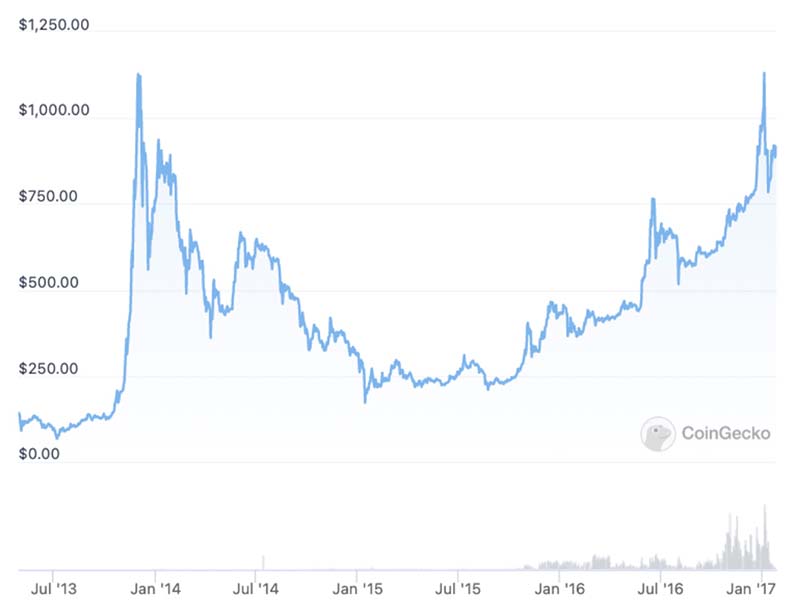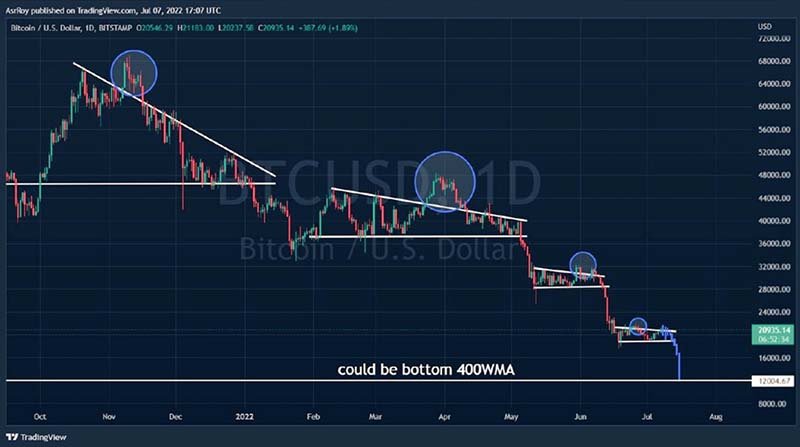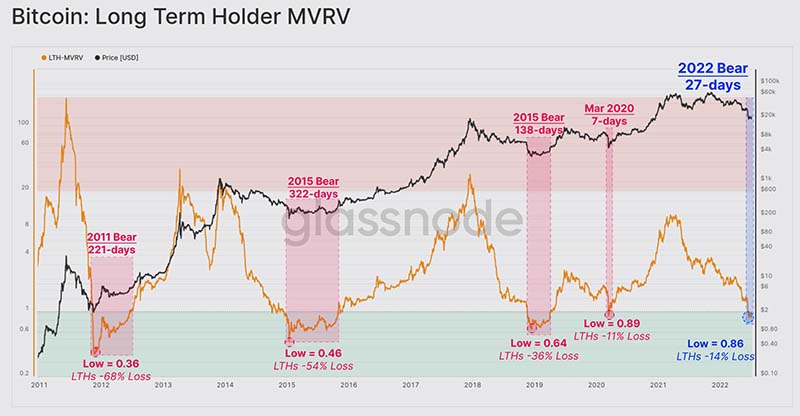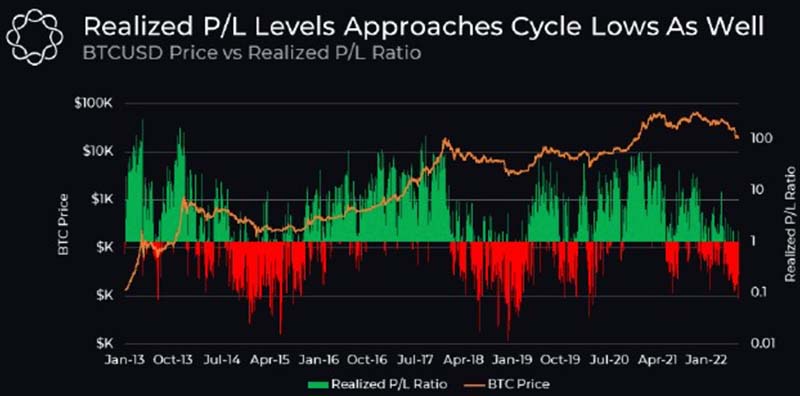
The Dollar Wrecking Ball: Why is a strong US dollar so dangerous?
The rising US dollar strength is starting to produce cracks across economies and markets.
The start of this year has been one of the worst in the crypto market history; June 2022 has been the worst month for Bitcoin since September 2011, and it has also posted the worst quarter in 11 years. After a severe breakdown like the one we are experiencing now, a market needs time to digest and process the new consensus price level. The asset then needs to work through a phase of forming a bottom in which it tries to recover the lost trust of investors. Once it happens, investors start accumulating the asset until it is ready to soar into new highs in price. This process applies to any asset traded in the markets; cryptocurrencies are no exception. In the figure below, we can see that during the two most recent crypto bear markets, this process took approximately two years until the price successfully reached the previous all-time highs (ATH).


We are slowly getting through the capitulation part, whose final inning tends to mark the beginning of the recovery phase, during which investors actively accumulate vast amounts of the asset. Unfortunately, we have most likely not yet seen the final breakdown. External economic factors still weigh heavy on the price of Bitcoin and other cryptocurrencies. Just a couple of days ago, we received an inflation report from the US, which showed a CPI number of 9.1%; the estimation range from economists was 8.6% - 8.8%. The fact that inflation keeps posting numbers above the estimates suggests that the US central bank will need to further tighten monetary conditions, increase interest rates, and drain liquidity out of the system. Such actions are usually negative for long-duration assets such as cryptocurrency. Inflation stays elevated across the developed world; thus, we can expect other central banks to set similar policies. Technical analysis does not add much hope either; the bitcoin chart is forming a bear flag, which is just another one in a long series of bearish flags. Such price action mostly results in a continuation of the trend, which would mean another leg lower.

If the history and on-chain metrics are to serve as a guide, then we are only at the beginning of the accumulation process described above. The chart of MRVR (Market Value/Realized Value) shows the average cost basis of long-holder investors (over six months), i.e. whether they are on aggregate in profit or a loss. We can see that just recently, we crossed into the green territory, suggesting the LTHs are now, on aggregate, losing money. During previous bear markets, we stayed in the territory on average for 180 days, suggesting another 5-6 months of bearish price action.

Similarly, looking at the realized profit/loss of bitcoin holders, we just approached the negative territory in which the holders are losing money. Considering the previous cycles, we have still some room to go before we reach the lows of the bearish price action.

Join us right now >>> REGISTRATION
It is crucial to look out for the final capitulation even though it is certainly difficult to determine which low is the absolute one. A solid indicator of a capitulation event is an active selling of bitcoin by bitcoin miners to cover their bills. It is usually a sign of a deep depression when the miners are in the need to sell their holdings of bitcoin to cover their overhead. Such activity would also be entailed by a declining hash rate, which would suggest that miners are shutting down their rigs to lower their costs.

The silver lining of the current downturn is the increasingly shining hands of the long-term investors. On-chain metric compiled by Coinbase Analytics shows that LTHs now comprise 77% of all the available Bitcoin supply. The number is far above the peak of the previous cycle, which only reached 60%. The cryptocurrency wealth is steadily being transferred into strong long-term hands. Even the current breakdown in price is mainly created by STHs who had bought at the top of the most recent cycle. The coins that are two years old and older are staying stationary.
Another positive aspect of the ending cycle, probably also the most crucial one, is that we are just entering the most lucrative phase of the whole cycle. Imagine entering a shop with the newest, most innovative technology selling at an 80-90% discount. Therefore, the best thing to do right now is to sit tight, accumulate a reasonable amount of capital, and get ready for the next “Crypto Black Friday”.
Comments
You must be logged in to add a comment.